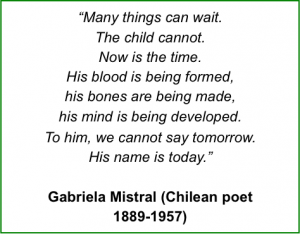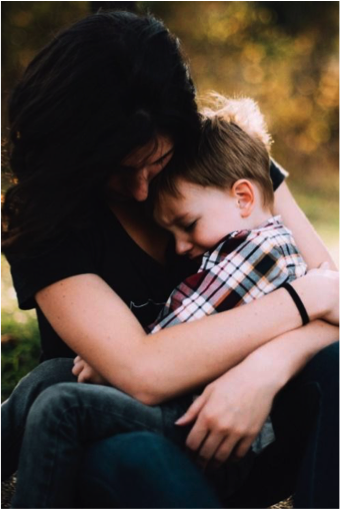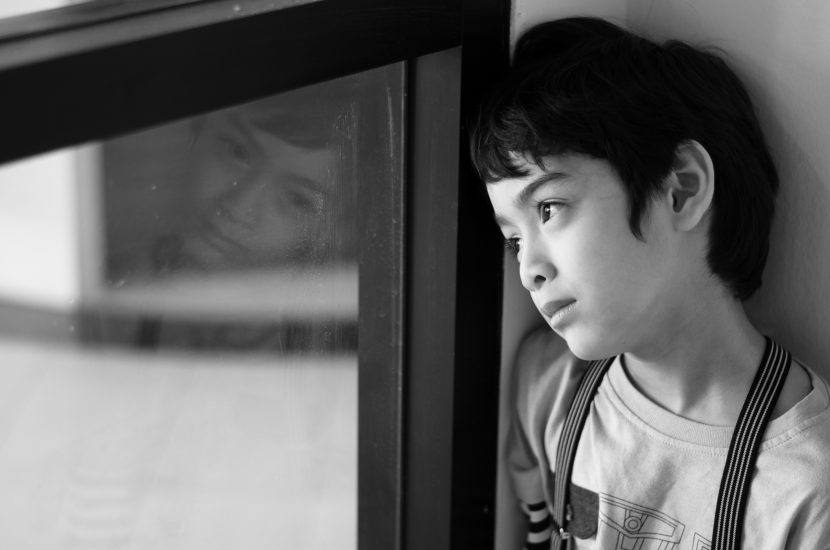As stated by the World Health Organization, “mental health is more than the absence of mental disorders”; mental health is fundamental to health and overall wellbeing because “without mental health there is no health” (World Health Organization, 2018a). Mental health issues at a young age affect children and adolescents all around the world in all societies (Patel, Flisher, Hetrick, & McGorry, 2007). According to the World Health Organization, up to 50% of mental disorders during adulthood have their onset in adolescence and up to 20% of children and adolescents experience mental disorders (World Health Organization, 2018b). An important problem is that about 70% of children and adolescents with mental disorders do not receive an appropriate intervention at the right time (Mental Health Foundation, n.d.).
Key facts about children’s mental health

To be mentally healthy means for a child to be able to cope with stress in any situation, to go to school and play at home and in the community without feeling angry, anxious or depressed (Mental Health Foundation, n.d.). A good mental health during childhood is fundamental to a child’s development and for reaching one’s own full potential.
Mental disorders often do not develop on their own but are triggered by changes or traumatic events in the life of a child. Common mental disorders that may occur in early childhood comprise anxiety, depression, self-harm, attention-deficit/hyperactivity disorder, obsessive-compulsive disorder or post-traumatic stress disorder (Centers for Disease Control and Prevention, 2018). Crucial changes in a child’s life that may lead to a mental health issue include starting school or moving home. Puberty is a phase that can lead to emotional and physical turmoil for a child, creating a certain vulnerability for mental problems. Traumatic events range from parent’s divorce, losing a loved person to natural disasters, violence and war.

Photo by Nathan Dumlao on Unsplash
The exposure to violence is one major determinant for children to suffer from mental health problems. Worldwide, children are being more and more exposed to violence with a severe influence on their mental wellbeing (Flannery, 2018). This exposure might be direct by experiencing physical, sexual or emotional violence in their community, at home or at school or more indirect by witnessing violence and hearing or watching violent events on social media, television or radio.
Mental health issues among children and adolescents are often neglected due to unawareness or existing stigma towards mental disorders and remain untreated. If left untreated, mental disorders may have wide-reaching negative impact on a young person’s development, educational attainment and transition to adulthood (World Health Organization, 2018b). Mental disorders at a young age can further lead to discrimination, stigma and exclusion, and may even result in limited access to social, education and health services; constituting a severe violation of children’s rights. Therefore, there is a great need to increase awareness on mental disorders during childhood, how to recognize them and what to do if identified.
What is being done to combat mental health issues among children?
Mental health, despite it being fundamental to overall health, has been largely disregarded for a long time and continues to experience stigmatization and discrimination all around the world (Ives, 2018). Recently, international and national stakeholders have paid attention to the effects of mental health to the global burden of disease and started to make promises to transform policies and programs to account for mental illnesses, especially among children and adolescents. Under Goal 3 of the Sustainable Development Agenda, Target 3.4 calls for the promotion of mental health and well-being (United Nations, n.d.). Addressing the global state of children’s mental health problems is of utmost importance to reach target 3.4.
The Mental Health Action Plan 2013-2020 by the World Health Organization highlights the fundamental role of mental health to achieve overall wellbeing (World Health Assembly, 2013). The plan outlines the necessary steps to close the gap in meeting the needs of children and adolescents who suffer from mental health issues: 1) more effective leadership and governance for mental health; the provision of comprehensive, integrated mental health and social care services in community-based settings; the implementation of strategies for promotion and prevention; and strengthened information systems, evidence and research. The suggestions present critical steps to reach long-term development in mental health policies, programs and research.
What you can do

Photo by Jordan Whitt on Unsplash
While developments at the global level are important to address children’s mental wellbeing worldwide, there are actions that everyone of us can do!
As a child: If you know another child who engages in unsafe behavior or expresses the willingness to hurt him or herself, do not hesitate to seek help as well. What you can do is to create your little community of friends, listen to each other’s feelings, just listen, feel into the other, her/his heart, and try not to judge. Try to meet regularly and ask yourself also how do I feel? Do not be afraid to seek help or support from a friend or adult, if you feel angry, worried or sad, especially over a long time.
As a parent: Pay attention to your child’s behavior, listen to what he or she is saying and take feelings seriously. If you have any concern, talk to your child directly or seek help from another caregiver, teacher or doctor. Early diagnosis is crucial to prevent any negative impact on a child’s development. Common warning signs of mental disorders among children are, but are not limited to, mood/behavior changes, extreme feelings, concentration difficulties, unexplained physical symptoms, such as headache or stomachaches, physical harm or substance abuse (Centers for Disease Control and Prevention, 2018).
We, at Humanium, believe that true healing starts with ourselves. Each of us lives on her/his own planet, has her/his own life experiences, sufferings and needs and wishes. Feel into them in a trusted environment and forgive kindly when you do not feel heard. Kindness and being gentle with each other is so important!
Written by Lina Brandt
References
Centers for Disease Control and Prevention. (2018). Children’s Mental Health. Retrieved August 2018, from https://www.cdc.gov/childrensmentalhealth/symptoms.html
Flannery, D. J. (2018). Here’s How Witnessing Violence Harms Children’s Mental Health.
Ives, J. (2018). World mental health support and the effect of stigma and discrimination. Retrieved August 2018, from https://www.news-medical.net/health/World-mental-health-support-and-the-effect-of-stigma-and-discrimination.aspx
Mental Health Foundation. (n.d.). Children and young people. Retrieved August 2018, from https://www.mentalhealth.org.uk/a-to-z/c/children-and-young-people
Patel, V., Flisher, A., Hetrick, S., & McGorry, P. (2007). Mental health of young people: a global public-health challenge. 369(9569).
United Nations. (n.d.). Sustainable Development Goal 3. Retrieved August 2018, from https://sustainabledevelopment.un.org/sdg3
World Health Assembly. (2013). Comprehensive mental health action plan 2013-2020.
World Health Organization. (2018a). Child and adolescent mental health. Retrieved August 2018, from http://www.who.int/mental_health/maternal-child/child_adolescent/en/
World Health Organization. (2018b). Mental health: strengthening our response. Retrieved August 2018, from http://www.who.int/news-room/fact-sheets/detail/mental-health-strengthening-our-response


